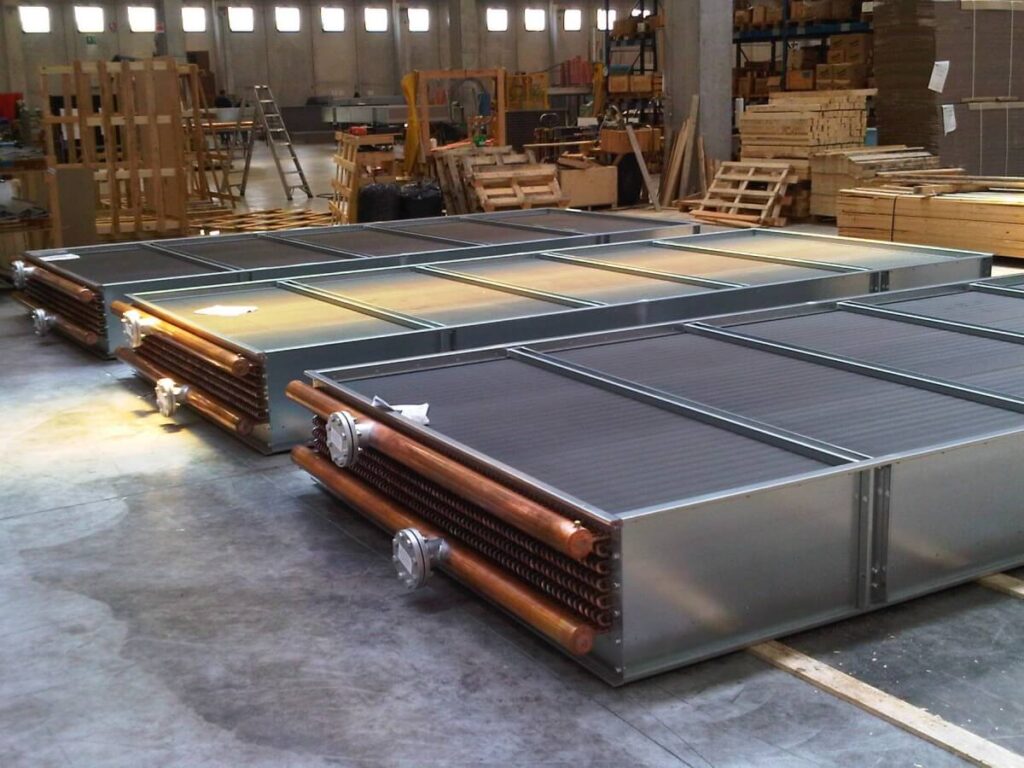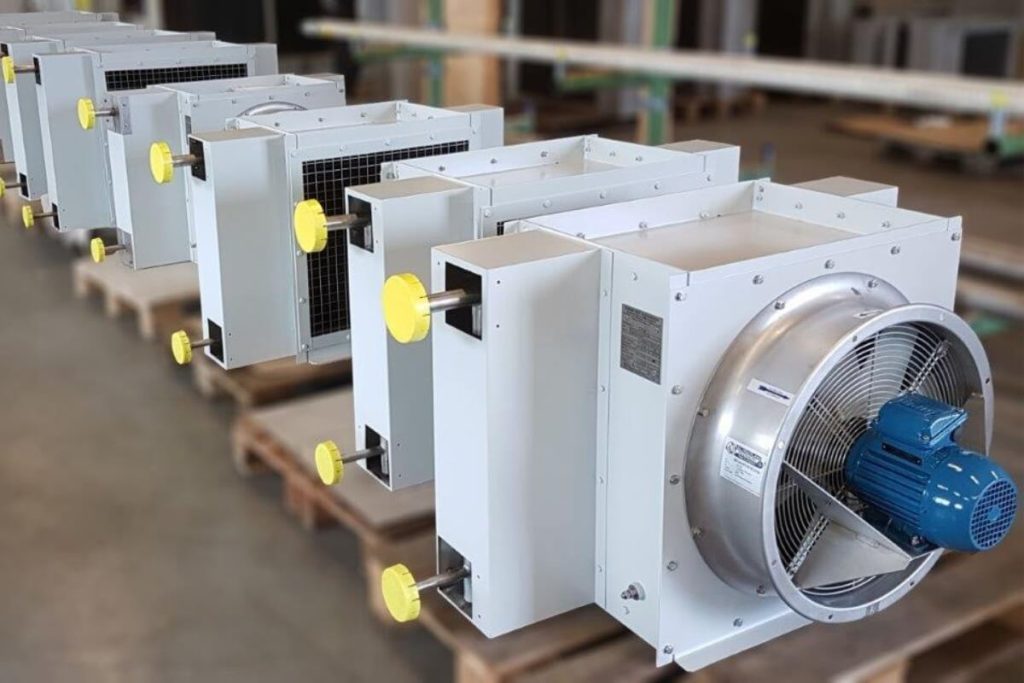Streamlining Efficiency
Cross flow heat exchanger

Elevating global standards with exceptional, unmatched Dutch craftsmanship in advanced industrial heat exchange.

Cross-Flow Heat Exchanger
A cross-flow heat exchanger is a specialized device where two fluid streams cross paths at an angle, typically perpendicular, facilitating the transfer of heat without direct contact. This type of heat exchanger is commonly utilized in various applications where space and efficiency are critical. In cross-flow designs, one fluid flows through tubes, and the other outside the tubes but across the tube direction, which optimizes thermal efficiency. The configuration allows for effective heat exchange between high and low-temperature fluids, making it an essential component in HVAC systems, power generation, and industrial processes. Its unique design reduces thermal resistance and enhances heat transfer rates, making it a preferred choice for systems where compactness and efficiency are paramount.

The Heart of Innovation: Cross-Flow Technology Unveiled
The world of heat exchangers is vast and complex, but at its core, the cross-flow heat exchanger represents a pinnacle of engineering designed to maximize thermal efficiency in challenging environments. Unlike traditional heat exchangers, the cross-flow model allows hot and cold fluids to pass through the exchanger at perpendicular angles, increasing the heat transfer efficiency and minimizing the footprint required for installation.
Engineering and Design Principles
At the heart of every cross-flow heat exchanger lies a meticulous design process focused on optimizing flow rates, reducing pressure drops, and managing temperature differentials effectively. The design is characterized by plates or tubes arranged to create a matrix through which one fluid travels horizontally while the other passes vertically. This perpendicular arrangement minimizes the mixing of fluids and maximizes the surface area available for heat transfer.
Material and Construction
Materials play a crucial role in the functionality of cross-flow heat exchangers. Stainless steel, known for its durability and resistance to corrosion, is a popular choice, especially in applications involving aggressive fluids or high temperatures. Advanced manufacturing techniques have also enabled the use of strong heat transfer plates and epoxy-coated surfaces to enhance performance and longevity.
Applications Across Industries
Cross-flow heat exchangers are not limited to one industry but are pivotal in many critical sectors. In power generation, they are essential for cooling generators and recycling waste heat into functional energy. HVAC systems rely on them for efficient thermal regulation in residential and commercial buildings, ensuring comfortable environments with optimized energy consumption. Furthermore, their compact design makes them ideal for use in space-constrained applications like automotive or aerospace, where efficiency cannot be compromised for size.
This broad applicability also extends to customization possibilities, where specific dimensions and configurations can be tailored to meet unique operational demands,

Discover Enhanced Efficiency with ICARUS Cross-Flow Heat Exchangers
In a world where efficiency and reliability are paramount, ICARUS stands at the forefront of heat exchange technology with our advanced cross-flow heat exchangers. Designed to meet the rigorous demands of modern industries, our heat exchangers are built to offer superior performance, ensuring maximum efficiency and durability.
Your Partner in Heat Exchange Solutions
At ICARUS, we understand that each application has its unique challenges and requirements. That’s why we offer customized solutions that go beyond standard specifications. Our cross-flow heat exchangers are tailored to optimize your process requirements, whether you need to manage extreme temperatures, handle different fluid types, or achieve precise temperature control in critical environments.
Connect with Us for Cutting-Edge Solutions
We invite you to explore the possibilities with ICARUS. Our team of experts is ready to assist you in selecting or designing the perfect heat exchanger that aligns with your specific needs. By choosing ICARUS, you’re not just getting a product; you’re gaining a partner dedicated to your success. Contact us today to discover how our cross-flow heat exchangers can transform your operations and elevate your system’s performance to new heights. Let ICARUS be the solution to your thermal management challenges, ensuring your operations run cooler, faster, and more efficiently.
Request a quotation
Elevate your efficiency with Dutch-engineered solutions tailored for your needs. Fill out the details below, and our team will provide a personalized quote to help you harness the power of optimized energy in manufacturing. Step into the future, one quote at a time.
ICARUS Heat Exchangers

